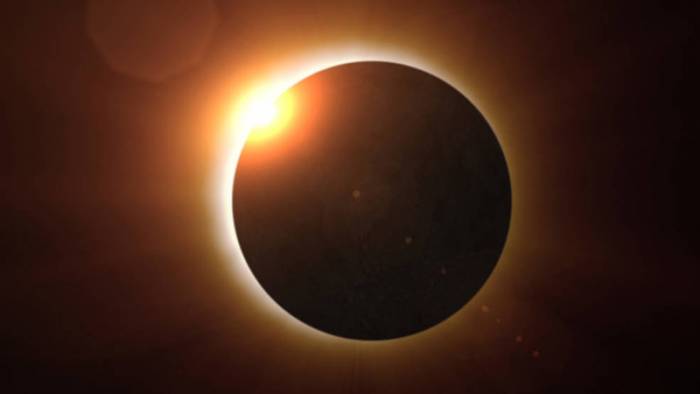The total eclipse is coming to America. Are you ready?

This week launches a new weekly column here at GearJunkie, Outdoor Hazards. Seems prudent to start with one we won’t have to revisit for some time: How to properly view the total eclipse and not ruin your eyesight.
If you are one of the 25 million who live near totality, you’ve probably got your calendar marked for August 21, your watches set, your spot reserved. It’s a once-in-a-lifetime experience that is not to be missed.
How to Watch a Solar Eclipse (And Not Go Blind)
We all know Mom was right: Never look directly at the sun. Doing so can cause irreparable eye damage or blindness. The same rules apply to looking at a partial solar eclipse.
But the rules loosen a little when the moon completely obscures the sun. NASA has provided some pointers on how to safely view the total eclipse.
Total Eclipse: What Is It?
A total eclipse is when the disc of the moon perfectly aligns and obscures the sun, revealing the sun’s outer corona, and casting a 70-mile-wide shadow across the Earth. The celestial event happens roughly every 18 months. This will be the first total eclipse to pass entirely over the continental U.S.
Eclipse: Where Will It Be?
The total eclipse will trace a path from Oregon to South Carolina, casting its shadow over the states between. NASA has posted a map page with state-by-state coverage. Depending on where you are within the band of totality, the event will last anywhere from 1 to 3 minutes.
Total Eclipse: How to View It
If you are fortunate to be inside the band of totality, you will be able to stare at the sun directly with the naked eye during totality only.
Even if you will be viewing the eclipse inside the band, you’ll need special-purpose eclipse glasses or welding goggles ISO certified to 12 or higher to view the transition of the moon into and out of the path of the sun. These glasses block out 100% UV light and 97% of infrared radiation, completely protecting the eye.
Solar Eclipse Glasses: What to Know

ISO-approved solar eclipse glasses must meet these safety standards:
- Transmit no more than 0.00032% of the sun’s light
- Be defect- and scratch-free
- Handheld viewers must be large enough to cover both eyes
- Labels must include the manufacturer’s name, instructions for safe use, and dangers of improper use.
What if I wear glasses? Put the ISO-approved shades over your normal eyeglasses.
What about sunglasses? Nope, even the darkest sunglasses transmit too much of the sun’s light. ISO-approved solar glasses are coated with aluminum or “black polymer,” blocking upwards of 100,000 times more light.
Binoculars, cameras, and telescopes. Observing the eclipse at X times larger will reveal the intricate solar flares. But it should only be done with the help of a lens filter. Lenses concentrate light and without protection will cause serious injury.
What do I do if I live outside the band? For those who will be watching near, but not inside the path of totality, you will witness a partially or unobscured sun and will need to wear certified glasses to view the partial event.
Likely the largest hazard will be human caused; traffic is predicted to be a bear, with populations potentially doubling inside the path of totality. Traveling? Bring food, water, and supplies. Tank up and prepare like it’s a backcountry excursion.
Worst-case scenario: Watching the partial eclipse without proper eye protection will burn your eyes and risk blindness.
Viewing the total eclipse will be a once-in-a-lifetime experience. It’s worth the drive and absolutely worth watching safely.








